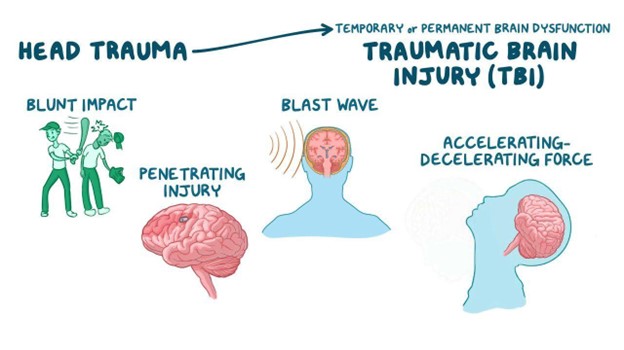When assessing a client diagnosed with basal cell carcinoma, which of the following findings will the nurse expect?
A blister-like pustule on the face that oozes clear fluid
A dark brown lesion that is flat
A small scaly, dry lesion on the elbow
Location on the top of the head where exposed frequently to sunlight
The Correct Answer is C
Choice A Reason: This is incorrect because a blister-like pustule on the face that oozes clear fluid may indicate impetigo, which is a bacterial skin infection, not basal cell carcinoma. Basal cell carcinoma is a type of skin cancer that arises from the basal layer of the epidermis, which is the outermost layer of the skin. Basal cell carcinoma lesions are usually not blistered or pustular, but rather smooth, shiny, or waxy.
Choice B Reason: This is incorrect because a dark brown lesion that is flat may indicate a mole, which is a benign growth of melanocytes, which are cells that produce pigment, not basal cell carcinoma. Basal cell carcinoma lesions are usually not dark brown or flat, but rather flesh-colored, pink, or red, and may have a raised or indented center.
Choice C Reason: This is correct because a small scaly, dry lesion on the elbow may indicate basal cell carcinoma. Basal cell carcinoma lesions are often small, scaly, and dry, and may bleed or crust over. They can occur anywhere on the body, but are more common on areas that are exposed to the sun, such as the face, neck, arms, or legs.
Choice D Reason: This is incorrect because location on the top of the head where exposed frequently to sunlight may indicate squamous cell carcinoma, which is another type of skin cancer that arises from the squamous layer of the epidermis, not basal cell carcinoma. Squamous cell carcinoma lesions are usually rough, scaly, or crusted, and may have a firm or hard texture. They can also occur anywhere on the body, but are more common on areas that are exposed to the sun.
Nursing Test Bank
Naxlex Comprehensive Predictor Exams
Related Questions
Correct Answer is D
Explanation
Choice A Reason: This is incorrect because nystagmus is not a response to stimuli, but a condition that causes involuntary eye movements. Nystagmus can be caused by various factors, such as inner ear disorders, brain lesions, or drug toxicity, but not necessarily by cervical spine injury.
Choice B Reason: This is incorrect because decorticate positioning is a response to stimuli that indicates damage to the cerebral cortex or the corticospinal tract. Decorticate positioning is characterized by flexion of the arms and extension of the legs. It does not indicate cervical spine injury, which affects the spinal cord below the brainstem.
Choice C Reason: This is incorrect because lack of any response to stimuli can indicate various levels of brain damage or coma, but not specifically cervical spine injury. Lack of any response can also be influenced by other factors, such as sedation, hypothermia, or shock.
Choice D Reason: This is correct because decerebrate positioning is a response to stimuli that indicates damage to the brainstem or the upper cervical spine. Decerebrate positioning is characterized by extension and outward rotation of the arms and legs. It indicates a severe and life-threatening injury that can impair vital functions, such as breathing and blood pressure.

Correct Answer is A
Explanation
Choice A Reason: "I ate shellfish about 2 weeks ago at a local restaurant." supports the medical diagnosis of hepatitis A, which is an infection of the liver caused by the hepatitis A virus (HAV). HAV is transmitted by fecal-oral route, meaning that it can be contracted by ingesting contaminated food or water, such as raw or undercooked shellfish from polluted waters. The incubation period for hepatitis A is about two to six weeks.
Choice B Reason: "I was an intravenous drug abuser in the past and shared needles." does not support the medical diagnosis of hepatitis A, but may indicate exposure to hepatitis B or C, which are infections of the liver caused by the hepatitis B virus (HBV) or hepatitis C virus (HCV). HBV and HCV are transmitted by blood or body fluids, meaning that they can be contracted by sharing needles, syringes, or other injection equipment with infected people.
Choice C Reason: "I had a blood transfusion in 1980 after major abdominal surgery." does not support the medical diagnosis of hepatitis A, but may indicate exposure to hepatitis B or C, which are infections of the liver caused by the hepatitis B virus (HBV) or hepatitis C virus (HCV). HBV and HCV are transmitted by blood or body fluids, meaning that they can be contracted by receiving blood transfusions or organ transplants from infected donors. However, since 1992, all donated blood in the United States has been screened for HBV and HCV.
Choice D Reason: "I have had unprotected sex with multiple partners." does not support the medical diagnosis of hepatitis A, but may indicate exposure to hepatitis B or C, which are infections of the liver caused by the hepatitis B virus (HBV) or hepatitis C virus (HCV). HBV and HCV are transmitted by blood or body fluids, meaning that they can be contracted by having unprotected sex with infected people. However, sexual transmission of HAV is rare, unless there is contact with fecal matter.
Whether you are a student looking to ace your exams or a practicing nurse seeking to enhance your expertise , our nursing education contents will empower you with the confidence and competence to make a difference in the lives of patients and become a respected leader in the healthcare field.
Visit Naxlex, invest in your future and unlock endless possibilities with our unparalleled nursing education contents today
Report Wrong Answer on the Current Question
Do you disagree with the answer? If yes, what is your expected answer? Explain.
Kindly be descriptive with the issue you are facing.
